At Glowskinhub.com, we believe beauty isn’t just a look—it’s a feeling
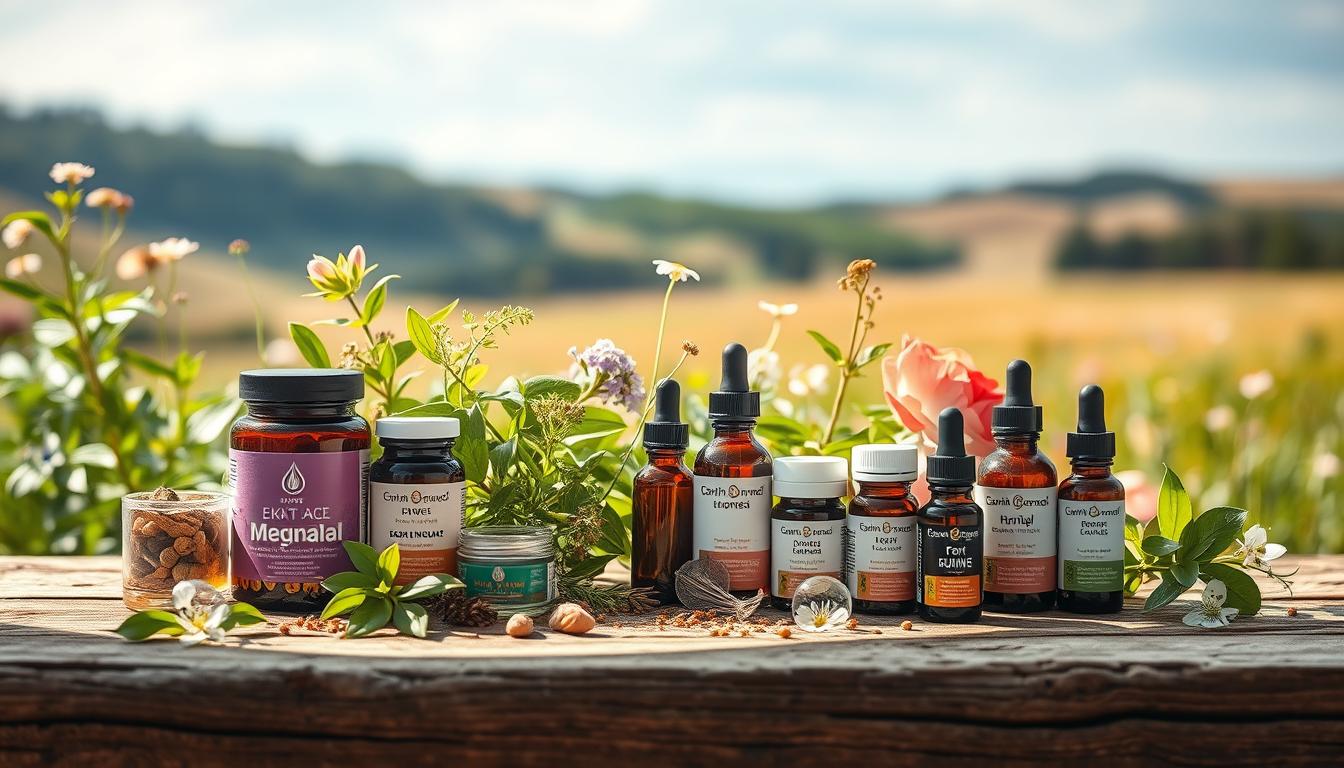
Top Fungal Acne Natural Remedies to Try
Fungal acne can be a persistent and frustrating Skin issue, often resistant to conventional treatments. Finding alternative solutions is crucial for those seeking relief.
Nature offers a variety of remedies that can help alleviate fungal acne symptoms. Using natural approaches can be beneficial, as they often come with fewer side effects compared to chemical-based treatments.
This article will explore some of the most effective natural remedies for fungal acne, providing you with a comprehensive guide to managing this condition.
Key Takeaways
- Understanding the causes of fungal acne.
- Exploring the benefits of natural remedies.
- Discovering effective natural treatments for fungal acne.
- Learning how to incorporate these remedies into your skincare routine.
- Avoiding common mistakes when using natural remedies.
Understanding Fungal Acne: Causes and Symptoms
Understanding the causes and symptoms of fungal acne is crucial for effective treatment and management of this common Skin issue. Fungal acne, medically known as Malassezia folliculitis, is a condition that arises from an overgrowth of yeast on the Skin.
What Is Malassezia Folliculitis?
Malassezia folliculitis is a condition where the yeast Malassezia overgrows in the hair follicles, leading to inflammation and acne-like symptoms. This yeast is naturally found on human Skin, but certain factors can cause it to overgrow, resulting in fungal acne.
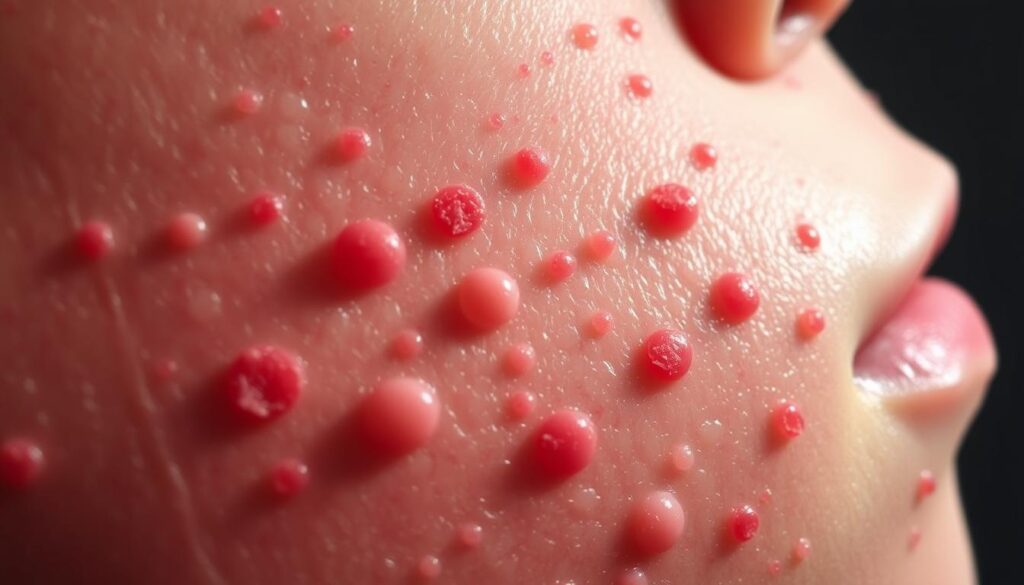
Common Causes of Fungal Acne
Fungal acne is triggered by several factors, including excessive sweating, wearing tight clothing, and using comedogenic products that clog pores. Additionally, hormonal changes and a weakened immune system can contribute to its development.
How to Differentiate Fungal Acne from Bacterial Acne
Differentiating between fungal and bacterial acne is essential for appropriate treatment. Fungal acne typically appears as uniform, itchy bumps, often on the forehead, nose, and chin. Unlike bacterial acne, it doesn’t respond to traditional acne treatments and may worsen with certain antibiotics.
Why Choose Natural Remedies for Fungal Acne
When dealing with fungal acne, many individuals are turning to natural remedies as a potentially safer alternative. Fungal acne, caused by an overgrowth of yeast in the Skin, requires a treatment approach that not only addresses the symptoms but also promotes overall Skin health.
Benefits of Natural Approaches
Natural remedies offer several benefits for those suffering from fungal acne. They tend to have fewer side effects compared to conventional treatments and can promote overall Skin health. Some natural remedies possess antifungal properties that can help control the yeast overgrowth associated with fungal acne.
Using natural remedies can also be a more holistic approach, focusing on balancing the Skin’s ecosystem rather than just treating the symptoms. This can lead to more sustainable long-term results and improved Skin resilience.
Limitations of Conventional Treatments
Conventional treatments for fungal acne often involve antifungal medications, which can be effective but may also have significant side effects. Long-term use of these medications can lead to resistance, making them less effective over time.
| Conventional Treatment | Potential Side Effects |
|---|---|
| Antifungal Medications | Liver damage, Skin irritation |
| Oral Antifungals | Gastrointestinal issues, allergic reactions |
Creating a Balanced Treatment Plan
A balanced treatment plan for fungal acne may incorporate both conventional and natural remedies. It’s essential to consult with a healthcare professional to determine the best approach for individual cases.
By combining the strengths of both natural and conventional treatments, individuals can create a comprehensive plan that addresses their specific needs and promotes overall Skin health.

Tea Tree Oil: Nature’s Antifungal Powerhouse
The antifungal properties of tea tree oil make it an effective treatment for fungal acne. Tea tree oil, known for its broad-spectrum antimicrobial activity, has been widely used in dermatology for various Skin conditions.
Antifungal Properties and Research
Studies have shown that tea tree oil exhibits significant antifungal activity against a range of pathogens, including those responsible for fungal acne. Its active compounds, such as terpinen-4-ol, contribute to its efficacy.
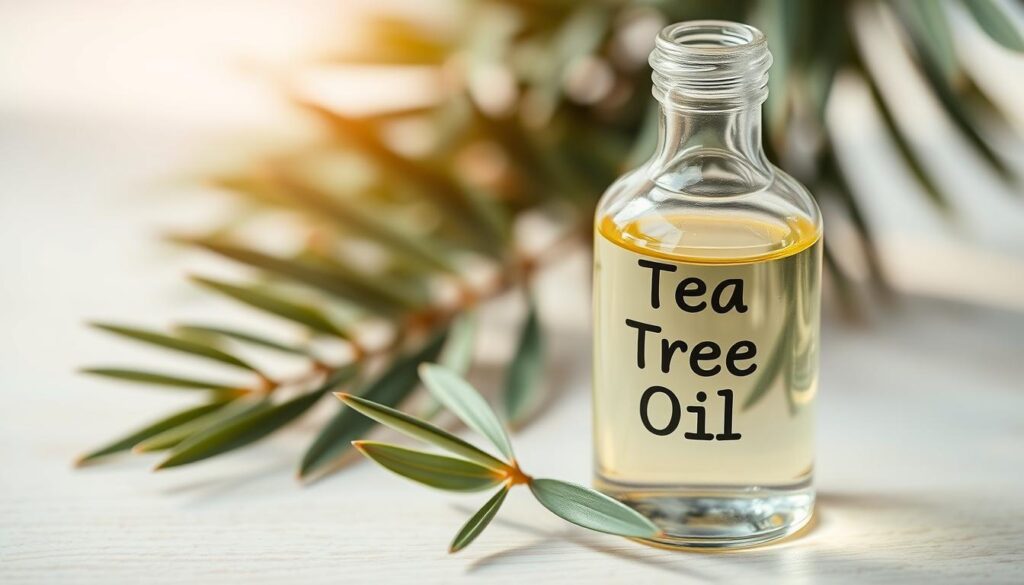
How to Apply Safely
To use tea tree oil safely, it’s crucial to dilute it with a carrier oil. Undiluted tea tree oil can cause Skin irritation.
Dilution Guidelines
A typical dilution ratio is 3-5% tea tree oil in a carrier oil like coconut or jojoba oil.
Application Frequency
Apply the diluted tea tree oil to affected areas up to twice daily, depending on Skin sensitivity.
DIY Tea Tree Oil Spot Treatments
For a simple spot treatment, mix a few drops of tea tree oil with aloe vera gel.
| Ingredient | Quantity | Purpose |
|---|---|---|
| Tea Tree Oil | 3-5 drops | Antifungal Agent |
| Aloe Vera Gel | 1 teaspoon | Soothing Agent |
Apple Cider Vinegar as a Fungal Fighter
With its antifungal and pH balancing benefits, apple cider vinegar is gaining attention as a treatment for fungal acne. This natural remedy has been used for various health and skincare issues due to its potential to restore the Skin’s natural pH balance, creating an environment less conducive to fungal growth.
pH Balancing Benefits
Apple cider vinegar’s acidity helps in balancing the Skin’s pH, which is crucial in controlling fungal acne. An imbalanced pH can lead to increased fungal growth, making the Skin more prone to breakouts. By using apple cider vinegar, individuals can potentially reduce the occurrence of fungal acne.
Proper Dilution Methods
To safely use apple cider vinegar on the Skin, it’s essential to dilute it properly. Undiluted apple cider vinegar can be too harsh, potentially causing irritation or burns. A common dilution method is to mix 1 part apple cider vinegar with 2 parts water. This ratio can be adjusted based on individual Skin sensitivity.
Application Techniques
There are several ways to apply apple cider vinegar to the Skin. Two effective methods include using it as a toner or as a spot treatment.
Toner Recipe
- Mix 1/2 cup apple cider vinegar with 1 cup water.
- Soak a cotton pad with the solution and sweep it across the face.
- Use once or twice daily as part of your skincare routine.
Spot Treatment Method
- Dilute apple cider vinegar as described earlier.
- Apply the solution directly to fungal acne using a cotton swab.
- Leave it on overnight and rinse off in the morning.
By incorporating apple cider vinegar into your skincare routine, you can potentially reduce fungal acne and achieve a clearer complexion. Always patch test any new skincare product, including those with apple cider vinegar, to ensure you don’t have any adverse reactions.
Coconut Oil: Antimicrobial Benefits for Skin
With its rich content of medium-chain fatty acids, coconut oil presents a promising natural remedy for fungal acne. Coconut oil’s antimicrobial properties have been recognized for their potential in managing various Skin issues, including fungal infections.
Medium-Chain Fatty Acids and Fungal Growth
The medium-chain fatty acids in coconut oil, particularly lauric acid, have been shown to exhibit antifungal properties, helping to control the growth of fungi on the Skin.
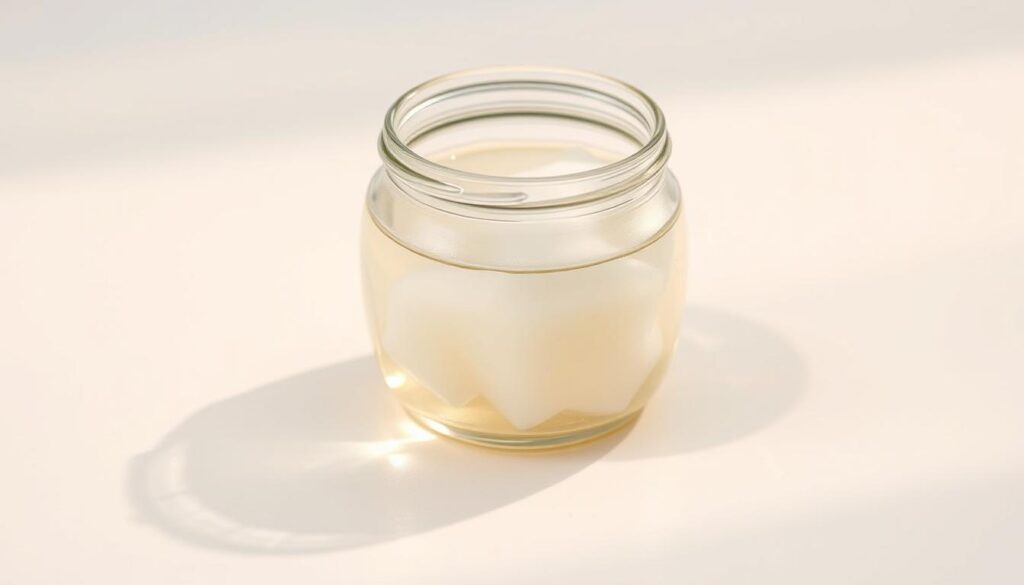
Best Application Practices
To effectively use coconut oil for fungal acne, apply a small amount to the affected area after cleansing. It’s essential to use high-quality, virgin coconut oil to maximize its antimicrobial benefits.
Who Should Avoid Coconut Oil
While coconut oil is beneficial for many, individuals with oily Skin or those prone to clogged pores should exercise caution due to its comedogenic potential.
Comedogenic Concerns
Coconut oil is considered comedogenic, meaning it can clog pores in some individuals. Those with acne-prone Skin should patch test coconut oil before using it extensively.
Alternative Carrier Oils
For those who find coconut oil too comedogenic, alternative carrier oils like jojoba or grapeseed oil may offer similar benefits without the risk of clogged pores.
| Oil Type | Comedogenic Rating | Antimicrobial Properties |
|---|---|---|
| Coconut Oil | 4 | High |
| Jojoba Oil | 2 | Moderate |
| Grapeseed Oil | 1 | Low |
In conclusion, coconut oil offers a natural and effective solution for managing fungal acne, thanks to its antimicrobial properties. However, it’s crucial to be aware of its potential comedogenic effects and consider alternative oils if necessary.
Sulfur Treatments for Fungal Breakouts
Sulfur has been a long-standing remedy in dermatology for various Skin issues, including fungal breakouts. Its effectiveness in treating fungal acne lies in its antifungal and antibacterial properties.
How Sulfur Fights Fungal Infections
Sulfur works by reducing the growth of fungi on the Skin, thereby decreasing the occurrence of fungal acne. It also helps in reducing inflammation and preventing future breakouts.
Natural Sulfur Sources
Some natural sources of sulfur include garlic, onions, and cruciferous vegetables. However, for topical application, sulfur is often used in the form of creams, masks, or soaps.
Creating Sulfur Masks at Home
Creating a sulfur mask at home is simple. You can mix sulfur powder with a carrier like honey or yogurt to create a paste.
MSM Powder Applications
MSM (Methylsulfonylmethane) powder is a popular form of sulfur used in skincare. It can be mixed with water or a carrier oil to create a face mask.
Sulfur Soap Options
Sulfur soaps are another effective way to incorporate sulfur into your skincare routine. They can help in controlling fungal acne and reducing inflammation.
| Sulfur Product | Benefits | Usage |
|---|---|---|
| Sulfur Mask | Reduces fungal acne, inflammation | Apply once or twice a week |
| MSM Powder | Antifungal, anti-inflammatory | Mix with water or oil, apply daily |
| Sulfur Soap | Cleanses, reduces fungal growth | Use daily for cleansing |
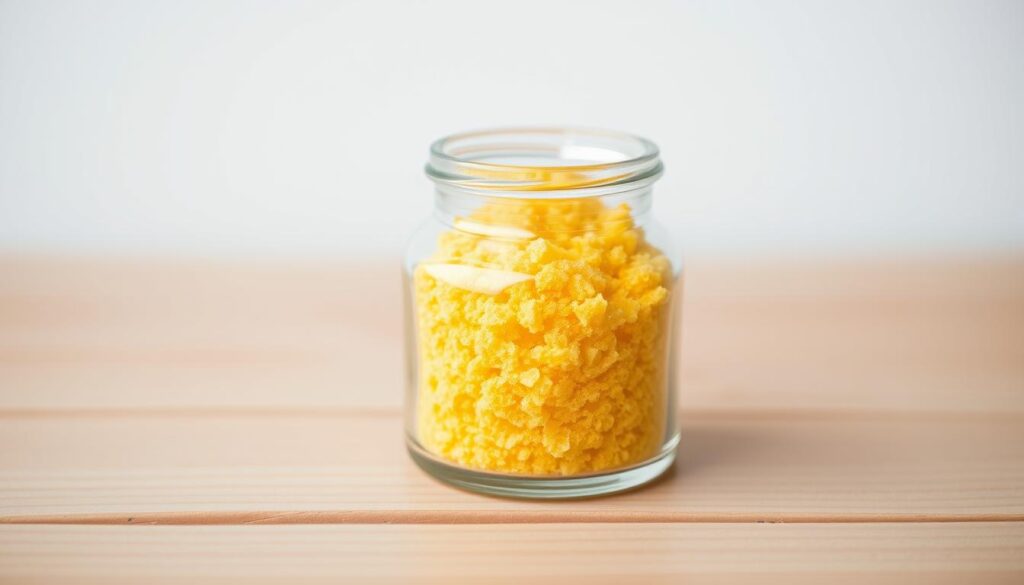
By incorporating sulfur treatments into your skincare routine, you can effectively manage fungal breakouts and achieve clearer Skin.
Top Fungal Acne Natural Remedies from Your Kitchen
Nature has provided us with numerous remedies for fungal acne, many of which can be found right in your kitchen. These natural ingredients are not only effective but also gentle on the Skin, making them a great alternative to harsh chemical treatments.
Raw Honey and Its Antimicrobial Properties
Raw honey is known for its antimicrobial properties, making it an excellent treatment for fungal acne. It can help soothe the Skin while fighting off the fungi that cause breakouts. To use raw honey as a treatment, simply apply a thin layer to the affected area and leave it on for 15-20 minutes before rinsing off with warm water.

Turmeric Paste Applications
Turmeric contains curcumin, a compound with potent antifungal and anti-inflammatory properties. To create a turmeric paste, mix turmeric powder with a small amount of water or coconut oil and apply it directly to the affected areas. Leave it on for 10-15 minutes before rinsing.
Aloe Vera Gel Treatments
Aloe vera gel is renowned for its soothing properties and can help calm irritated Skin caused by fungal acne. It also has antifungal properties that can help combat the underlying cause of the breakouts. Apply aloe vera gel directly to the affected areas and leave it on overnight for best results.
Greek Yogurt Masks
Greek yogurt contains probiotics that can help balance the Skin’s microbiome, reducing the occurrence of fungal acne. Apply a thin layer of plain Greek yogurt to the face, leave it on for 15-20 minutes, and then rinse off with lukewarm water. This can help soothe and calm the Skin while promoting a healthier Skin environment.
By incorporating these natural remedies into your skincare routine, you can effectively combat fungal acne without exposing your Skin to harsh chemicals. Always patch test any new ingredient to ensure you don’t have any adverse reactions.
Essential Oils That Combat Fungal Skin Issues
Fungal acne can be challenging to treat, but certain essential oils offer promising natural solutions. These oils have been used for their antifungal properties and can be a valuable addition to a skincare routine.
Lavender Oil Applications
Lavender oil is known for its calming effects on the Skin and its antifungal properties, making it a potential treatment for fungal acne. It can be used in a diluted form as a spot treatment or added to a carrier oil for a soothing massage.
Oregano Oil Solutions
Oregano oil is recognized for its strong antifungal properties, thanks to its high concentration of carvacrol. However, it must be diluted properly to avoid Skin irritation. A few drops can be added to a carrier oil for application on affected areas.
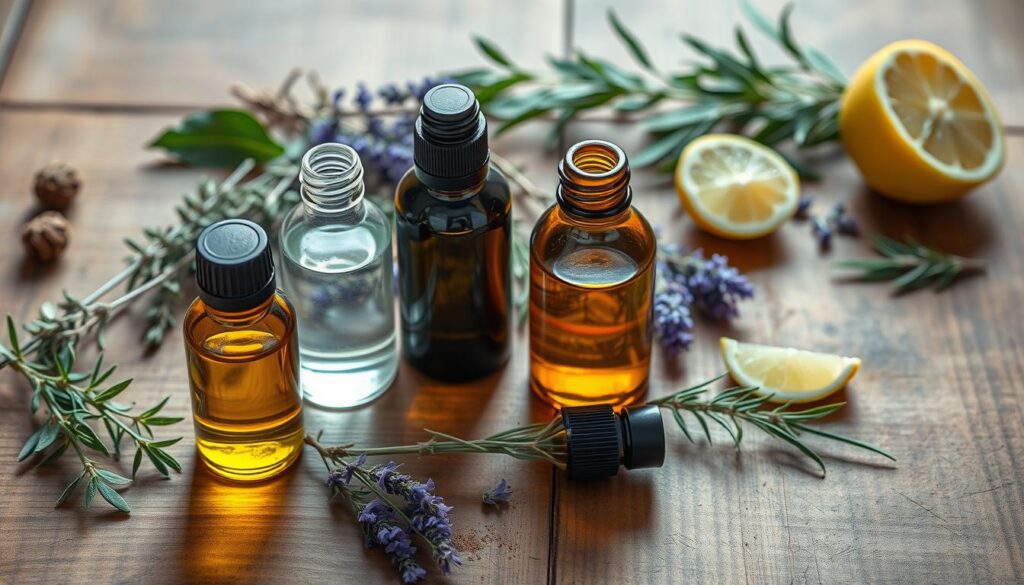
Thyme and Clove Oil Treatments
Thyme oil, with its antifungal properties, can help combat fungal infections. Clove oil, known for its eugenol content, also offers antifungal benefits. Both oils should be used with caution and diluted appropriately.
Patchouli and Geranium Options
Patchouli oil has antifungal properties that may help in treating fungal acne, while geranium oil can help balance the Skin’s natural oil production. Both can be used in diluted forms as part of a skincare routine.
Dilution Guidelines
It’s crucial to dilute essential oils with a carrier oil before applying them to the Skin to avoid irritation. A general dilution ratio is 1-3% essential oil to carrier oil.
Patch Testing Importance
Before using a new essential oil, even if diluted, it’s essential to perform a patch test to check for any adverse reactions. This simple step can prevent significant Skin irritation.
By incorporating these essential oils into a skincare routine, individuals can harness their antifungal properties to help combat fungal acne. Always remember to use them responsibly and consult with a healthcare professional if unsure.
Dietary Changes to Support Skin Healing
To effectively manage fungal acne, it’s vital to understand how dietary adjustments can support Skin healing. The food we consume plays a significant role in our overall health, including the health of our Skin.
Foods to Avoid with Fungal Acne
Certain foods can exacerbate fungal acne by promoting the growth of Malassezia, the yeast-like fungus responsible for this condition. It’s advisable to limit or avoid:
- Sugary foods and drinks, as they can feed the fungus.
- Refined carbohydrates, which can cause inflammation.
- Dairy products, particularly those with high sugar content or hormones that can stimulate oil production.
Anti-Fungal Diet Principles
An anti-fungal diet focuses on foods that can help reduce the growth of Malassezia and promote overall Skin health. Key principles include:
- Consuming plenty of vegetables, which are rich in antioxidants and fiber.
- Incorporating lean proteins and healthy fats, such as those found in nuts and seeds.
- Drinking plenty of water to stay hydrated.
Supplements That May Help
In addition to dietary changes, certain supplements can support Skin health and help manage fungal acne.
Probiotics for Skin Health
Probiotics are beneficial bacteria that can help maintain a healthy gut microbiome, which is linked to improved Skin health. They can be found in fermented foods like yogurt and kefir or taken as supplements.
Zinc and Omega-3 Benefits
Zinc is a mineral that supports immune function and wound healing, while Omega-3 fatty acids are anti-inflammatory and can help reduce Skin inflammation. Both can be beneficial in managing fungal acne.
| Supplement | Benefits |
|---|---|
| Probiotics | Supports gut health and immune system |
| Zinc | Boosts immune function and wound healing |
| Omega-3 Fatty Acids | Reduces inflammation |
Creating a Natural Skincare Routine for Fungal Acne
A well-crafted natural skincare routine is key to addressing fungal acne and achieving balanced Skin. By incorporating gentle cleansing techniques, non-comedogenic moisturizers, and a thoughtful treatment schedule, you can effectively manage fungal acne.
Gentle Cleansing Techniques
Gentle cleansing is the foundation of any skincare routine, especially when dealing with fungal acne. Use a mild, sulfate-free cleanser that won’t strip your Skin of its natural oils. Cleansing twice a day is usually sufficient, but be gentle to avoid irritating the Skin.
Non-Comedogenic Moisturizers
Moisturizing is crucial, even for acne-prone Skin. Opt for non-comedogenic moisturizers that are labeled “oil-free” or “non-acnegenic.” These products are less likely to clog pores and exacerbate fungal acne.
Weekly Treatment Schedule
Consistency is key when treating fungal acne. Develop a weekly treatment schedule that includes antifungal treatments, gentle exfoliation, and moisturizing. This balanced approach helps in managing fungal acne effectively.
Fungal-Safe Product Ingredients
When selecting skincare products, it’s essential to choose ingredients that are safe for fungal acne-prone Skin. Avoid products with comedogenic ingredients and opt for products with antifungal properties.
| Product Type | Fungal-Safe Ingredients | Ingredients to Avoid |
|---|---|---|
| Cleansers | Tea tree oil, aloe vera | Sulfates, fragrances |
| Moisturizers | Coconut oil, hyaluronic acid | Petroleum jelly, mineral oil |
| Treatments | Salicylic acid, sulfur | Benzoyl peroxide (can be too harsh) |
Conclusion: When to See a Doctor and Next Steps
After exploring various natural remedies for fungal acne, it’s essential to know when to seek medical attention. If your symptoms persist or worsen despite trying these treatments, consider consulting a dermatologist for further guidance.
When deciding when to see a doctor, consider the severity of your symptoms. If you experience intense itching, redness, or inflammation, it’s crucial to seek professional help. A dermatologist can provide a proper diagnosis and recommend personalized treatment plans.
For next steps in fungal acne treatment, consider combining natural remedies with medical guidance. This comprehensive approach can help you manage your condition effectively. Remember to maintain a consistent skincare routine, including gentle cleansing techniques and non-comedogenic moisturizers.
By adopting these strategies and being aware of when to seek medical help, you can take control of your fungal acne and achieve healthier, clearer Skin.





